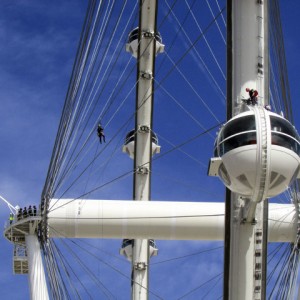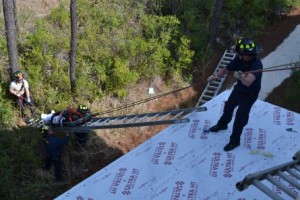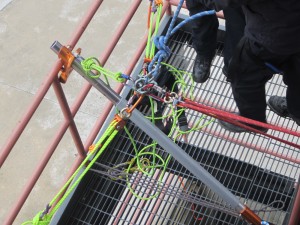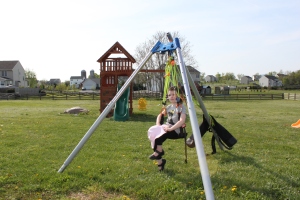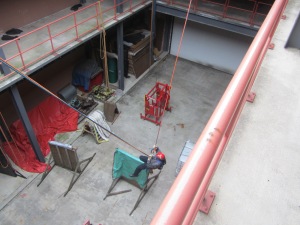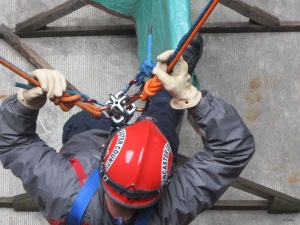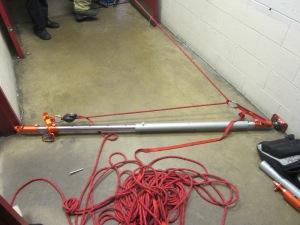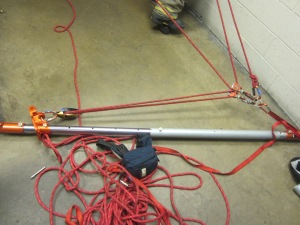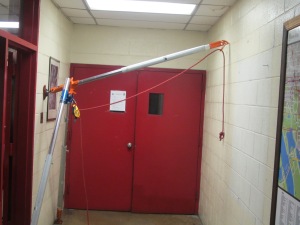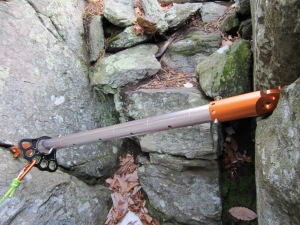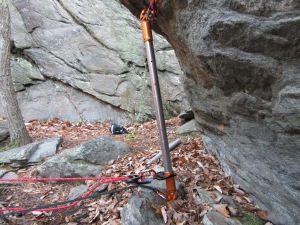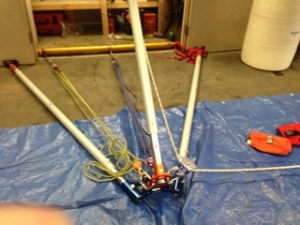This post was originally published in Dec of 2012. After switching servers we lost the video and some of the pictures. We’ve recently found them again and wanted to repost this for the many people who contacted us during the past 4.5 years asking about it. Enjoy.
During our most recent “New Technologies” class in Lancaster, PA, we we were posed with the scenario of how to create a high point and system for rescue from grain silos. It was explained to us that the flimsyness of a roof on a silo doesn’t exactly inspire confidence to operate on. Not to mention that there aren’t that many anchors up there.
After thinking on it for a bit, we were able to come up with what basically amounts to a gin pole lashed to the interior ladder and rising up above the top of the silo, much like a flagpole. So we called it the Appalachian Flag Pole (naturally).
After searching around for a while after class, it appears we were not the first people to figure out the AF. The cell tower industry uses this sort of thing to raise sections of their towers. They just call it a gin pole…BORING. As far I can tell, nobody has tried this as a rescue technique.
Boring Gin Pole:
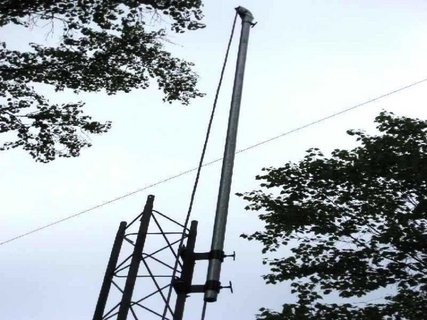
The basic setup of the Appalachian Flag Pole consists of lashing a few sections of an Arizona Vortex to the interior ladder of the silo. With about 3 feet of it sticking up above the top of the structure. Yes, it is unsupported, but there is not a lot of bending force on the top of the AFP. The resultant force is pretty much straight down the leg, with the force being transferred to the ladder.
Version 1 of the of the AFP had the haul system attached to the orange head, which is at the bottom of the AFP and lashed to the ladder, with a change of direction at the top of the AFP and the rope going back down to the victim.

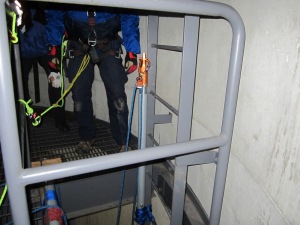
It worked well, but required a lot of resets.
So, while working with Collin Moon and the guys from Elevated Safety in Chicago, we were able to refine the technique by attaching out MPD to the top of the AFP and do a counter balance raise. We also figured out that we could the blue AZV head for out top anchor point instead of a foot. And when Rock Exotica comes out with the 720 head…watch out!
Check out the video below to see the AFP in action. A couple of things to keep in mind: Where the camera is filming from would actually be the outside of the silo. Collin is the rescuer in this case; the victim outweighs him by a good 50lbs and he was still able to easily accomplish the task. This only happens when the rescuer hauls upwards on the victims line while simultaneously sitting down on the counterbalance line. Lastly, after the victim is out of the hole at the top (the metal grating in this case) they can be pushed to the outside of the silo and lowered with the MPD. If the video below is taking too long to load, CLICK HERE for the video on Youtube. Take a peak:
There are some urban applications that we believe the APF would excel at and will post the results when we complete the testing on it. It is our belief that it can be used successfully in the urban setting, such as the chimney in the picture below, where a man suffered a fatal fall into the chimney while attempting to take pictures. This happened in Chicago on 12/13. Article Here

If you have any thoughts or comments, feel free to leave them or to contact me at kelly@rescue2training.com. Enjoy!

